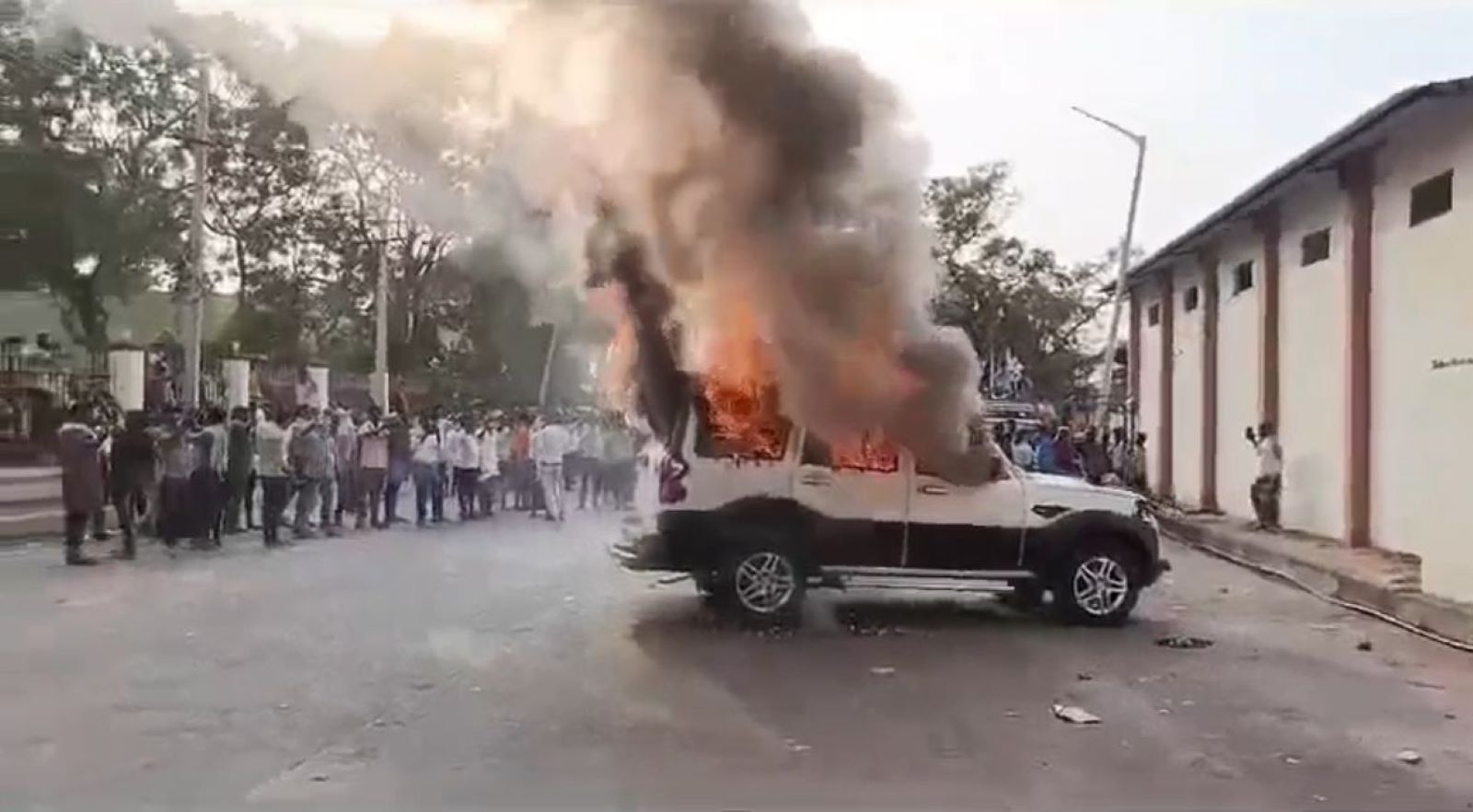In one week, the price of dry chillies has reportedly dropped by ₹12,000 to around ₹10,000 per quintal, resulting in a big jolt to farmers.

Farmers set vehicles on fire while protesting against the drastic price drop in dry chillies at Byadagi on Monday.
Tension prevailed in the Byadgi International Market in the Haveri district of Karnataka on Monday, 11 March, as upset farmers not only staged protests but also reportedly set ablaze several vehicles and an Agriculture Produce Market Committee’s (APMC) office over the sudden drop in the price of dry chillies.
In one week, the price of dry chillies has reportedly dropped by ₹12,000 to around ₹10,000 per quintal, resulting in a big jolt to agrarians in Byadgi.
At present, the dry chilli is priced anywhere between ₹8,000 and ₹12,000 per quintal.
Following the price drop, the farmers took to the streets in Byadgi town on Monday to express their anger and sought answers from the APMC officials over the sudden plunge in prices.
The farmers’ protest turned violent as enraged agrarians reportedly pelted stones and set fire to the local APMC office and several vehicles, including a fire-tender.
This resulted in the shutdown of the market until further orders from the relevant authorities.
The police rushed to the APMC yard to pacify the situation, with huge deployment in and around the location.
A case has been registered in this regard at the Byadgi Police Station.
Reacting to these developments, Karnataka Chief Minister Siddaramaiah sought a report at the earliest on the drastic drop in prices of dry chillies.
Meanwhile, Haveri Deputy Commissioner Raghunandan Murthy, Superintendent of Police Anshu Kumar, and other officials attended a meeting with the farmers, urging them to withdraw their protest and promising necessary measures. However, they continued to protest at the APMC yard.
On Monday, the aggrieved farmers took to the streets of Byadgi town, demanding accountability from APMC officials for the alarming drop in prices.
Byadagi International Market is a popular APMC yard and the biggest market for dry chillies in India.
It recorded an annual turnover of around ₹2,000-3,000 crore in dry chillies alone for the last three fiscal years.
According to the AMPC officials: “The price of dry chillies per quintal was around ₹20,000 last week. Now, it has plummeted to ₹8,000-10,000 per quintal.”
Tensions hit boiling point at #Karnataka‘s Byadagi International Market as the price of dry chillies plummeted by ₹10,000 to ₹12,000 per quintal in just one week.
Farmers, frustrated by the sudden drop, took to the streets, allegedly setting fire to the APMC office and… pic.twitter.com/NUxJ7Z1QzC
— South First (@TheSouthfirst) March 11, 2024
According to the police: “Some of the upset farmers went to question the AMPC officials over the price drop. It turned into an altercation, leading to protests.”
The cops also said: “The protesting farmers in the APMC yard took the law into their hands and set dry chillies, the APMC office, and several vehicles — including sanitising vehicles — on fire, resulting in the damage to public property.”
They added” “The on-duty police rushed to the spot, alerting firefighters. The firefighters controlled the blaze. The police deployment was also increased, with the closing down of the APMC market until further orders.”
The police have not made any arrests in connection with the incident.
Following the incident, Karnataka Chief Minister Siddaramaiah on Monday sought a report from the officials concerned over the drastic drop in the dry chillies price.
Responding to the developments in Byadgi, Karnataka Home Minister Dr G Parameshwar confirmed the price drop to reporters in Bengaluru, and said: “We are verifying whether such a price drop has been reported in other markets as well.”
Confirming other developments, he, too noted that the chief minister had sought a report on the drastic price drop. “The state government will take necessary measures based on the report,” he stated.
Minister for Sugars and Haveri district in-charge Shivanand Patil chaired an emergency meeting with the officials concerned, where the district officials joined virtually.
(Edited by Arkadev Ghoshal)

May 06, 2024

May 06, 2024

May 06, 2024

May 05, 2024

May 05, 2024

May 05, 2024